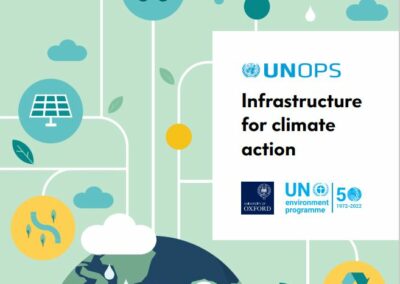The transport system in central England can reach net zero emissions by 2050 according to a new study for England’s Economic Heartland (EEH), a sub-national transport body and strategic partnership responsible for an area stretching from Swindon to Cambridgeshire, Northamptonshire to Hertfordshire, and with a population of 5.1 million.
The EEH’s Draft Transport Strategy, released in July 2020 for consultation until October 2020, sets out ambitious targets to reach net zero carbon emissions by 2050 whilst supporting sustainable economic growth over the next 30 years, to support and drive the region’s innovative science and technology specialism, its 280,000 businesses and societal benefits.
- A new study by University of Oxford and University of Southampton provides an evidence base for the Draft Transport Strategy. Pathways to Decarbonisation maps the EEH road and rail transport network and uses advanced modelling to demonstrate a variety of ‘pathways’ EEH could take to achieve a net zero carbon transport system by 2050.
- The team from the Universities of Oxford and Southampton used their National Infrastructure Systems MODel (NISMOD), developed by the Infrastructure Transitions Research Consortium (ITRC), to advise on alternative pathways to decarbonisation. The NISMOD v2 Transport Model is one of the few national-scale road traffic model capable of carrying out such sophisticated calculations and analysis.
- The strategic transport model predicts passenger and freight vehicle demand and simulates traffic on major roads, predicting changes in flows based on a number of variables. The forecasts take into account the changes in both exogenous (e.g. population and income) and endogenous (e.g. travel time and travel cost) variables linked to travel.
- Following the analysis, EEH has decided to combine two of the pathways modelled: ‘Highly Connected’ and ‘Policy-Led Behaviour Shift’ to prioritise infrastructure investment through improved digital communications and embedded technologies plus policy decisions such as workplace parking levies and congestion charges in urban areas.
- For the Highly Connected Pathway, autonomous vehicles are assumed to make up 30% of the vehicle fleet in 2050 and will free up additional road capacity, requiring only 75% of the road space compared with non-AVs. This pathway also assumes more sophisticated vehicle routing systems based on real-time traffic information coupled with traffic data from vehicle positioning systems and crowd-sourced mobile phone and satnav data, plus smart logistics systems to optimise freight movements. The increased use of video conferencing, 3D printing, ultra-high-speed internet connections and will reduce the need for passenger transport. The pathway does incorporate an increase in freight transport, particularly light goods vehicles due to an increase in home deliveries.
- For the Policy-Led Behaviour Shift Pathway, autonomous vehicles are assumed to make up 15% of the vehicle fleet in 2050. Policy measures are assumed to be used to promote active travel and more sustainable transport modes along with encouragement to move away from single-occupant car driving to car sharing and public transport. Demand management measures might include higher road tax, workplace parking levies, or road pricing to disincentivise travel on congested routes in peak time. Incentives such as discounts and promotions to encourage walking and cycling (including electric bikes), use of public transport and shared mobility could also be used in this pathway. The delivery mechanism used to deliver these is not specified and would need to be determined by local authorities or Government.
- Both pathways assume 100% zero-emission cars, HGVs, and PSVs by 2050.
Martin Tugwell, Programme Director at England’s Economic Heartland, comments:
EEH is committed to net zero emissions from transport by 2050 – if not sooner. Our partnership with ITRC demonstrates how we are harnessing the world class expertise and innovation which exists in the region in order to achieve this. We know a ‘business as usual’ approach to our transport system and relying on national interventions alone will not get us where we need to be – we need to go further.
By utilising cutting edge modelling techniques, Pathways to Decarbonisation is an incredibly valuable piece of work, exploring the extra measures which could be taken. It shows there is a viable pathway to achieving zero carbon but that this requires a wholesale change to the way we view and plan connectivity: a systems approach that aligns interventions in transport, digital and energy infrastructure to a common objective. Our Draft Transport Strategy reflects this paradigm shift, and I’d encourage people to have their say during the consultation which runs until October 6th.
Professor Jim Hall, Director of Research in the School of Geography and the Environment at the University of Oxford and Director of the ITRC, says:
The UK is committed to reducing its carbon emissions to net zero, and every part of the economy needs to contribute. Decarbonising transport is a big challenge, but technology is now giving us a big help because electric vehicles are becoming more affordable and can now drive as far after a full charge as a polluting car does on a tank of petrol.
However, this analysis by the Universities of Oxford and Southampton demonstrates that technology is not enough. There needs to be very firm policy leadership, including on the question of road user charging, together with infrastructure investments in electric vehicle charging, public transport, walking and cycling.
Our analysis has used the NISMOD infrastructure simulation model to explore possible futures and advise England’s Economic Heartland on the choices that need to be made to ensure that the region’s Transport Strategy is consistent with our climate commitments.
The EEH also commissioned the report to help it address challenges, partly fuelled by its economic growth:
- Currently EEH transport carbon dioxide emissions are disproportionately higher than in other UK regions (at 47% compared to 37%)
- Historic underinvestment in infrastructure and services in EEH has led to close-to-capacity transport, digital and other infrastructure networks
- The EEH transport network is currently over-focused on routes to London, leaving East-West travel underrepresented.
There is a linked article in the Civil Engineering Surveyor (Nov 2020).


